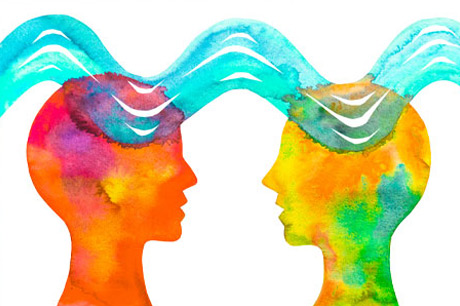
he COVID-19 pandemic and the efforts to prevent its spread have touched every aspect of daily life. A Kaiser Family Foundation poll found that 45 percent of adults in the United States reported their mental health has been negatively impacted due to stress related to COVID-19.
For some, fear of themselves or loved ones falling ill has caused feelings of anxiety. For others, the isolation and possibility of job loss, and all the potential repercussions that come with it, has led to deepening depression.
In California, teachers, administrators and staff are among those struggling with the fallout of the pandemic — all while attempting to be a comforting presence for their students.
“The day that we left for the extended break (last spring) was also the day I received a layoff notice. My partner, who is a school counselor, also received a layoff notice, so in the midst of all of this and trying to get distance learning going, we’re both in a situation where we didn’t know where we were going to be financially,” said Brittany Perrish, an AP psychology and AP U.S. history teacher at San Diego Unified School District’s Junipero Serra High School.
Though her layoff notice was recalled the last week of April, her partner’s remained in effect, and that month and half of uncertainty was incredibly stressful, Perrish said.
“Those six weeks, on top of trying to provide as much support for students and parents as I could, was really disorienting, because you’re in this spot where you have to try and be the rock for kids while at the same time being in free-fall yourself,” she said. “I’m fortunate in that I already had an established relationship with a therapist, so I was able to keep that support, which was incredibly helpful, but I know there are teachers who didn’t have access to mental health services — especially before, but even currently. There was a little community of us trying to check in on one another.”
Yet at the forefront of her mind each day: “How are my students doing?”
Though she tried to keep up morale by posing silly daily questions (Is a hot dog a sandwich? Is cereal soup?), some of her students are facing significant challenges in their home lives that can’t be solved so easily.

—Brittany Perrish, teacher, Junipero Serra High School
One of Perrish’s first-generation students was the president of multiple clubs at school and had a part-time job before the pandemic. The student was then laid off and as one of the few fluent English speakers in his household, he expressed worry over his family’s situation.
In her office hours, Perrish said this student had sought her help navigating the California Employment Development Department website to apply for unemployment. Though she tried to help him, there was only so much she could do. “He’s in this situation where he clearly needs help and I’m powerless to really do anything about it.”
The need for increased mental health supports for children and teens was growing well before the pandemic. According to 2017–18 data from the National Survey of Children’s Health, more than 7 percent of California respondents said their child had received counseling or treatment from a mental health professional in the last year, while 2 percent reported their child needed mental health care but didn’t receive it. That accounts for almost 200,000 children. In 2018, more than 41,000 California youth ages 5-19 were hospitalized for mental health issues, representing a 38 percent increase in the last decade, according to the Lucile Packard Foundation for Children’s Health.
With the emergence of COVID-19, resulting school closures and a far-from-normal return to instruction, mental health professionals have said one major concern is that children who rely on their school to provide mental health services no longer have access.
Susan Coats, mental health and crisis consultation chair of the California Association of School Psychologists, said that when school closures were initially announced and presumed to be a short-term solution to slow the spread of COVID-19, many students were excited for the chance to sleep in.
Once it started to become more apparent that students would finish the school year through distance learning while the state continued operating under shelter-in-place orders, Coats said the lack of connection to their peers, teachers, coaches and support staff sank in and left many students vulnerable to mental health challenges — including those who had not dealt with these issues before.
An online survey by one of the American Civil Liberties Union of Southern California’s youth committees found an increasing number of students reported feeling overwhelmed by factors related to the pandemic. Common concerns included worrying about the health of their family and friends, unemployment in the home, feeling isolated from friends, possibly falling behind academically or even being stuck in an abusive living situation.
The 650 respondents illustrate the need for expanded mental health services across 49 districts in Sacramento, Oakland, Los Angeles and the Central Valley.
Throughout the state, teachers and school psychologists alike used every tool at their disposal to connect with their students, but especially those most vulnerable to abuse or neglect in the home, or those who had already been struggling with their mental health.
In L.A. County’s Baldwin Park Unified School District, where Coats serves as a school psychologist, preparation on how to continue serving students who were receiving services started prior to extended school closures. The community-based mental health agencies the district works with immediately began shifting to offer virtual counseling, Coats said. Even with that planning, though, there were still hurdles.
“Our school mental health personnel started making plans with our students. We all started talking about the students who were in greatest need and how to stay in contact with them, whether it be by phone, by email, by Google classroom, Google Hangout or by postcard — some way to not lose connection with them,” Coats said. “But when you have gaps in a system, what happens is when you’re in a crisis, those small gaps become gaping holes.”
Experts say that upon students’ return to campuses, the demand for mental health services will be greater than what was available even before the pandemic. In 2019, the ratio of school psychologists to students was 1,041 to 1 statewide, according to California Department of Education data. The American School Counselors Association recommends a ratio of 250-1.
And with tight financial situations leaving little room for new spending, expanding much-needed counseling services will prove even more difficult for districts.
That doesn’t mean all hope is lost, Coats said, as long as meaningful steps are taken to address the problems spotlighted in recent months. “I believe that everything in the end can come back around in a positive. We’ve got to address the gaps in institutional systems, we’ve got to address the gaps in all kinds of things that we didn’t think we had to do before.”
Looking at socioeconomic, cultural, household and religious factors, California is one of the most diverse states in the country, and that diversity is reflected in its student body. But as students, faculty and school staff return to campus, everyone will have experienced this “common universal trauma,” and will need support in building resiliency and coping strategies to manage what’s happening, Coats said.
Campuses — when children are able to return to in-person instruction — will not look or feel the way they did before. And as teachers, students, bus drivers, cafeteria workers, custodians and librarians return to school, it is likely that some will do so having experienced job loss in the family, homelessness due to a loss of income, or even the death of a loved one whose funeral they could not physically attend.
“When we get back, I think we’re going to have vulnerabilities in teachers. There are going to be vulnerabilities in students. We’ll start to hear the stories of what happened,” Coats said, noting that it will be important for schools to change the ways in which they respond to grief among their staff and students. “It’s going to be more than just being trauma informed. It has to be trauma responsive, and that means not just educating staff and students about what trauma is, but it’s also being more kind, more patient, more looking into what is driving behavior, more listening and using more of our resources.”
As the education system begins to move through this experience, Coats said that breaking down silos and working together — whether it be with local organizations or the county office of education — will better allow districts to address their school community’s mental health needs in the long run.
“I definitely believe that when you have adversity, once you get through it, it doesn’t take away the pain and it doesn’t take away what we experienced. It doesn’t marginalize that,” she said. “Instead, it creates an empathy, and it also creates a momentum for us to do something about this.”